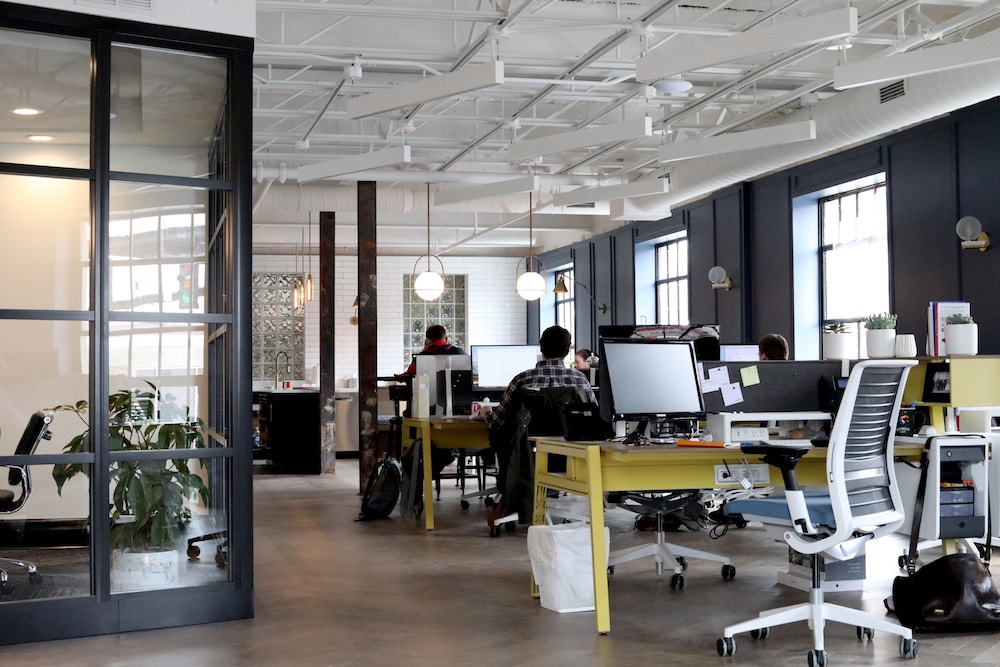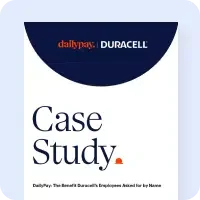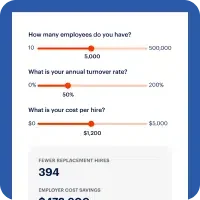Over the last several years, there has been an abundance of coverage related to a tight labor market. With more jobs than qualified talent, organizations must find ways to differentiate themselves to attract new hires while simultaneously working to retain existing employees.
Specifically, 78% of HR leaders are more concerned about the talent shortage today than they were a year ago.
This issue has stemmed into a broader conversation about best HR practices: what makes employees want to work with particular companies? How can we become an organization in high demand?
The fact that engagement levels have plateaued an unimpressive rate, year-over-year despite a unified effort to improve them shows that occasional workplace happy hours, or annual bonuses aren’t enough to incentivize employees to love their job.
For this reason, shifting the focus to employee experience has become a priority for many organizations.
What Does an Employee Experience Mean?
 The employee experience is defined as what employees encounter, observe and feel over the course of their employee journey at an organization. It had deeper implications than employee engagement and culture.
The employee experience is defined as what employees encounter, observe and feel over the course of their employee journey at an organization. It had deeper implications than employee engagement and culture.
In order to improve the employee experience, employers need to get to the heart of what makes an employee’s day-to-day life better versus offering sporadic or outdated incentives for being a part of a company.
Recent studies by Deloitte University Press shows that almost 80% of executives worldwide rated employee experience as important or very important.
The Crux of Employee Experience
With multiple generations active in the workplace, remote workers becoming more commonplace, and an increasingly competitive talent market, office dynamics have changed drastically.
What drove employees 20 years ago will look drastically different today.
Each generation in the workforce has different needs that will play a role in their overall experience with your organization:
Baby Boomers
Baby Boomers currently hold nearly a third of all jobs in the U.S. marketplace. Additionally, more than half of all leadership positions are held by Baby Boomers. As they creep closer to retirement age, their priorities have changed from work-oriented to family-oriented. Organizations also recognize that losing this demographic will cause a strain.
To keep both employee and employer happy, two-thirds of companies have begun implementing flexible work hours and schedules to keep Baby Boomers on staff longer. This arrangement works well for Baby Boomers who often enter retirement for personal reasons. According to research by Monster:
- 60 percent leave due to health problems or what is sometimes referred to as acquired disabilities
- 22 percent leave to care for a family member or spouse
- 10 percent retire due to a lack of transferable skills
By offering schedule flexibility, or family care programs, Boomers can remain in the workforce longer, with fewer regulations, while companies reap the rewards of more time for knowledge share with younger generations.
 Generation X
Generation X
Studies indicate that Generation X’s upbringing has shaped their current workplace needs. Generation X was the first segment of the U.S. population where a two-income family was more common than one. For that reason, Gen Xers may have grown up taking care of themselves at home, which has instilled the need for autonomy, independence and self-reliance.
As such, it’s important for those traits to be translated into the workplace as well. Research shows that Gen X values autonomy and rewards/benefits that reflect flexibility.
When asked what is most important to Gen Xers at work, research suggests:
- Flexible schedules
- Family leave
- Ability to make a difference in the organization
- Recognition for their work
- Development opportunities
This generation can bring maturity and leadership to your organization if they have the tools that help them feel good at work.
Millennials
The needs of millennials have been one of the most covered HR topics in recent years. The priorities of this demographic are clearly outlined in a number of studies:
- Health and wellness programs
- Workplace flexibility
- Support and feedback
- Coaching (but not micromanaging)
- Social consciousness
- Strong workplace culture with collaboration
While many organizations think millennials only care about a “fun” work environment, it may be more accurate to say that millennials value a strong work-life balance, but also have practical expectations from their employers.
Generation Z
The needs of Gen Z have some similarities to millennials, but also some noticeable differences. While both generations have expressed the need for consistent feedback from employers, Gen Z may care less about a work-life balance and more about security. Gen Z sites the following as important aspects in their career:
- Money
- Job security
- Opportunity to advance
Additionally, Gen Z is looking for independence. Their ideal work environment is one where they are recognized for individual contributions versus team projects. 35% of Gen Zers prefer an environment where they don’t have to share office space, a nod to their territorial and competitive workplace nature.
Additional considerations for all employees
Modern employees are overwhelmed, citing long hours and hyper-connectivity as focal points of their stress. Still, fewer than 16% of companies have a program to simplify work and reduce stress for their workers.
Though each generation touched on flexibility in varying levels of importance, it was still universally noted. Especially among parents; 84% of working parents said work flexibility is the number one most important factor in a job.
The Pillars of Customer Experience
After analyzing the current needs of employees across all generations, the critical points can be grouped into three buckets.
Or, as Jacob Morgan, author of “The Employee Experience Advantage” and an expert in the space describes it, the three pillars of customer experience:
- Culture: Which is a culmination of leadership, the sense of purpose your employees feel, the organizational structure, and the people within your organization.
- Technology: This refers to the tools employees use to get their jobs done, the technology that allows for workplace flexibility, and the tools that inspire collaboration.
- Physical workspace: Cubicles and sterile offices are going how of style. Rather, physical workspace or how the office floor plan creates workplace collaboration or independence, the design of the office, including the art hanging on the walls, and the physical perks of an office are all important to your employees.
By focusing on the three pillars of customer experience, you are taking control of the perception of your organization, is a start toward making it more desirable to work for you.
 Employee Experience is More Than a Feeling
Employee Experience is More Than a Feeling
Making employees feel good is more than just a kind thing to do. Improving the employee experience can:
- Improve retention
- Shorten the recruiting process
- Impact your bottom line
Specifically, a study by Alex Edmans shows that companies listed in the ‘100 Best Companies to Work For in America’ generated 2.3% to 3.8% higher stock returns per year than their peers because their employees are happy, more productive, and more tenured.
When the employee experience is good, employees are engaged and able to get their work done efficiently; an equation that delivers better bottom line results.
Strategies to Improve Employee Experience
Not every organization has the budget to overhaul the technology or workspace, but here is what you can do to start making a difference.
Implement your employee’s feedback
Ask your employees questions that help drill down on the strengths and weaknesses of your organization. For example ask:
- When and why a candidate made the decision to work for you
- How effective your onboarding process was
- How an employee’s experience has changed as their tenure increases
- How an employee’s experience has changed as the company grows
- What ideas your employees have for improvements
- How management is doing to connect with employees
Then, actually implement changes based on the feedback. According to Qualtrics, 60% of U.S. employees reported having a way to provide feedback about their own employee experience but only 30% of U.S. employees said their feedback is acted upon by their employer.
Focus on autonomy
You may not be able to remodel your office to be a cubicle-free zone or create an open-air plan, but perhaps there are smaller adjustments you can make to create a feeling of flexibility and autonomy.
- Can you instill a work-from-home policy once a month?
- Is there a common space within your office that can double as an “independent zone” for workers who need to step away from their desk?
- Is there a way you can offer a flex-time program to help out when your staff needs to take personal time, without taking paid leave?
All generations in the workplace have made it very clear that work-life balance and flexibility are important to them. By providing this benefit, you are improving the experience for all employees, across the board.
Gamify the Workplace
Gamification is the process of taking something that already exists in your organization, like a website, training program, or onboarding process – and integrating game mechanics to motivate participation, engagement, and loyalty.
According to Gartner, 70% of Forbes Global 2000 companies will implement gamification strategies to boost engagement, retention, and revenues. Gamification encourages:
- Teamwork by tracking and rewarding collaboration
- Recognition and rewards based on workers’ achievements
- Satisfaction from workers as they sharpen their skills
Gamification can help you cultivate your workers’ sense of purpose by quantifying their progress as they develop new proficiencies and take on greater responsibility in the workplace.
Leverage the HR technology marketplace
The HR technology marketplace is hot right now. That’s because HR technology can make a big difference in how employees perceive your company and its efficiency. Types of HR technology include:
- Application tracking software
- Employee self-service technology
- Talent management
- Learning and development
- Employee recognition
The easier it is to onboard, redeem benefits, and access continued education through the technology a company has invested in, the better the employee experience.

(Photo by Venveo on Unsplash)
How to Measure the ROI and Impact of Employee Experience
While many CEOs value employee experience, 46% don’t know how to measure it. Discover how you can realize the impact of your employee experience initiative:
eNPS surveys
An eNPS surveys measures employee loyalty, which is a critical component of your organization turnover rate and referral rates. Presumably, happy employees won’t leave whereas happy employees will likely to recommend your company as a place to work.
An eNPS survey is a list of carefully curated questions that help define how many promoters, passive, and detractors you have at your organization. After analyzing the eNPS survey results, an organization discovers their eNPS score with this simple calculation:
(Number of Promoters — Number of Detractors) / (Number of Respondents) x 100
Calculate your eNPS score before launching your employee experience program, and then reassess after your program has been running. Has your eNPS score improved?
Measure your incoming pipeline for new recruits
One component of the employee experience is how it changes internal and external perception of your organization.
The healthier your employee’s perception of your organization, the more likely they are to brag about their place of work to their network. If you don’t have one already, create a referral program. Then measure what your referral pipeline looks like before and after an employee experience initiative.
An uptick in applicants to your organization after investing in employee experience could be an indicator the perception of your organization is gaining ground.
Measure your employee’s lifetime value
Are your employees staying longer? The goal of improving the employee experience is to lessen the burden of recruiting while simultaneously retaining your existing employees for longer.
Measure your overall retention numbers, have they declined since introducing employee experience enhancements?
Can you look at trends by generation? For example, we’ve long known that millennials are known as job hoppers. Specifically, one CareerBuilder survey states that 45% of newly hired college grads leave a company in less than two years. Additionally, by age 35, about 25% of young employees would have worked five jobs.
Can you determine if your new hires (either millennials or Gen Z) are breaking social norms and staying longer than two or three years with your organization?
Consider revenue upticks
Employee experience will impact revenue in a couple of ways:
- More tenured employees can offer a more comprehensive service because of their extensive knowledge
- Spending less on recruiting by maintaining high levels of retention
- Offering better service because of more engaged, and happy employees
- Happy employees are more productive, caring about their job more than disengaged employees
After introducing an employee experience initiative at your organization, how has your bottom line been impacted
Revenue growth that isn’t attributed to changes in products may be directly related to your new initiative.
Want to know more about the employee experience?













 Generation X
Generation X Employee Experience is More Than a Feeling
Employee Experience is More Than a Feeling